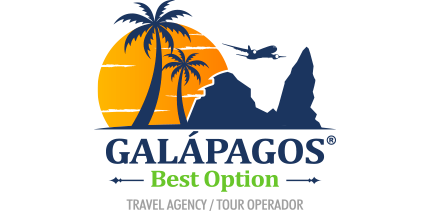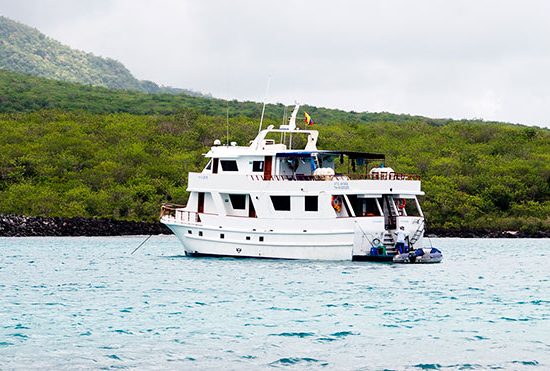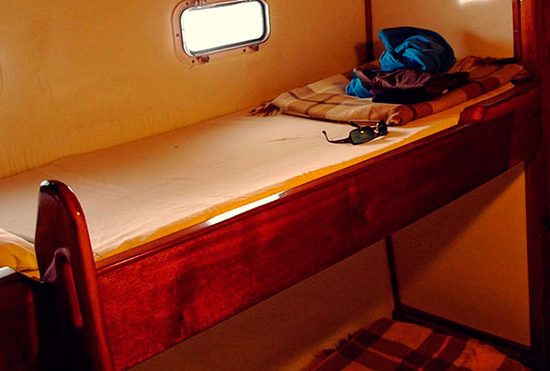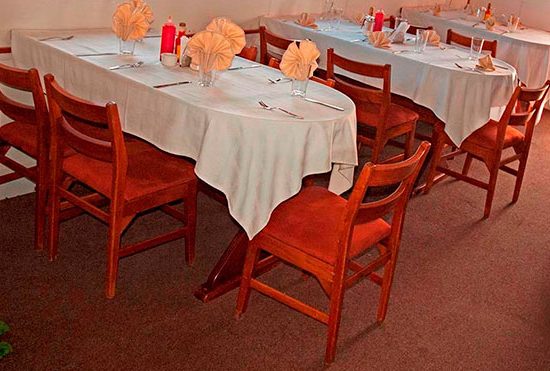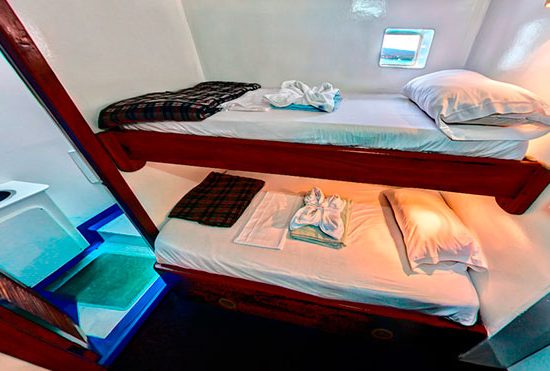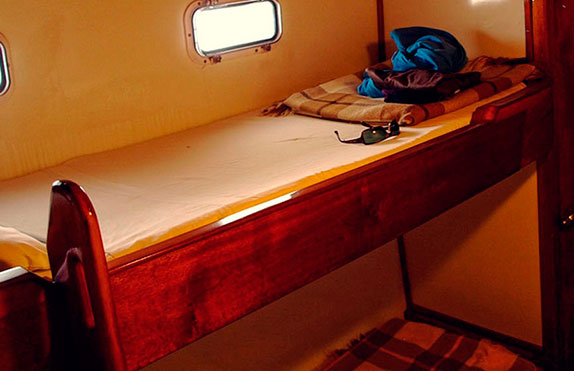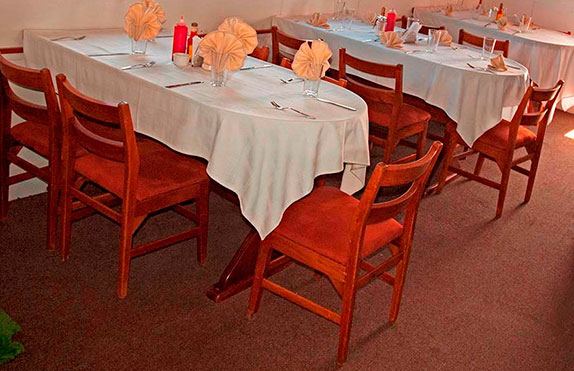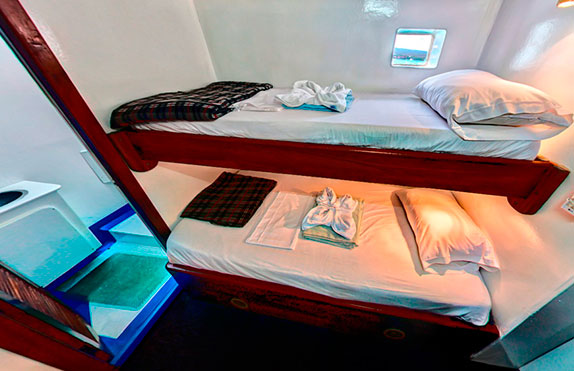Darwin Yacht
Sail through the islands in one of the best superior tourist class yachts, ideal for backpacker travelers on a low budget. The Darwin Yacht has 8 cabins with private bathrooms, hot water and air conditioning. The cabins all have bunk beds.
Ask about our last minute prices!
RESERVE THIS CRUISE
Starting Price Per Person: $1220,00 USD, all taxes are included.
Please confirm availability for your desired itinerary by contacting us at:
info@galapagosbestoption.com / sales@galapagosbestoption.com / Whatsapp +593 967742545
PAYMENT POLICY
To book and confirm any tour, we must receive 100% of the total amount prior to the tour as follows:
50% due at the time of booking
50% due two weeks before the date of your tour
CANCELLATIONS
Any last minute cancellations or changes by the customer may incur a fee to be imposed by Galapagos Best Option SA.
If for any reason a passenger is not present at the time of their flight they will be considered a no show and will not be subject to any refund by the agency.
Please read our full Cancellation and Refund Policy.
The Galapagos National Park has the right to make any changes to the itinerary due to natural disasters or scientific research projects.
ADVENTURE 8 DAYS
Day 1 Baltra Airport and Mosquera Island
To ensure that no foreign plants or animals are brought into the islands, travelers passing through Baltra Airport must undergo an inspection and pay a park entrance fee of $100. A guide will meet and assist travelers with their luggage, and escort them on a short bus ride to the port of Seymour, where they will board the Yacht Darwin and be welcomed by the captain and crew.
Mosquera IsletMosquera Islet is a reef formed by rocks and coral, with a wide white sand beach that is around 160 meters at its narrowest point and an estimated length of 600 meters. This island has a large population of sea lions and is a great spot to observe various species of shorebirds. There have been occasional sightings of Orcas feeding on sea lions in the area.
Day 2 : South Plaza Island & Santa Fe Island
South Plaza IslandPlaza Sur Island, one of two islands known as Islas Plazas, can be found east of Santa Cruz Island. The landing spot is on the north coast of the island, in a channel that separates it from Plaza Norte Island. Plaza Sur is 13 hectares in size and has a height of 25m. The succulent plant, Sesuvium edmonstonei and Portulaca oleracea, are commonly found on the island and are the preferred food of the land iguanas. The land iguanas on Plaza Sur are smaller than those found on other sites and nest during the hot season. There are several hybrid iguanas found throughout the island, which are the result of a male marine iguana and a female land iguana mating. These hybrid iguanas are unique in appearance, recognizable by their black or gray color, with a land iguana’s crest, but face and tail of the marine iguana. The iguana population may decrease during consecutive dry years due to a lack of food and water. The allowed tour is a group tour with a naturalist guide, which includes guided walks.
Santa Fe IslandSanta Fe Island's visitor site is located on the northeast part of the island. Of the two species of land iguanas found in the Galapagos, the Conolophus subcristatus inhabits Plaza Sur, Santa Cruz, North Seymour/Baltra, Isabela, and Fernandina, while the Conolophus pallidus species only lives in Santa Fe. This species is mainly distinguished by its larger and paler color. According to Geist D.J, Santa Fe could be the oldest Galapagos volcano, with sub-aerial rocks dating back 3.9 million years. The island of Santa Fe has a mix of underwater lava pushed to the surface by uprising and lava that were deposited subsequently to the uprising. Another attraction of Santa Fe Island is the presence of giant tunas with a wider trunk than any other island.
Day 3 : Española Island: Gardner Bay, Islote Gardener, Islote Osborn & Punta Suarez
Gardner BayGardner Bay is situated in the northern coast of Española Island, and the visitor area is made up of two beaches that have a combined length of 1300 meters. The main attraction in this area is the colony of sea lions during the breeding season. The location is also home to three species of Darwin’s finches and serves as an important nesting area for sea turtles.
Punta SuarezPunta Suarez is found west of Española Island, and the trail is approximately 1670 meters long, taking around two hours to complete. Española Island is estimated to be 3.3 million years old and is mainly covered with basaltic lava rocks. The albatross, an endemic species to Española Island, can be seen between April and November or December. Española Island has a high level of endemism because it is isolated from other islands, which has led to the development of unique species such as turquoise-colored marine iguanas and carnivorous mockingbirds. Additionally, the island has the largest of the seven species of lava lizards that are endemic to the Galapagos.
Day 4 : Floreana Island: Post Office Bay & Punta Cormorant
Post Office BayThe location known as Post Office Bay has a historical significance related to the whaling era, where ships came to collect supplies of Galapagos tortoises and water. It is believed that a whaling boat captain placed a barrel in the 18th century, for sailors passing through the bay to leave mail and deliver letters with the same destination. This tradition is still being followed by tourists visiting Galapagos today. Additionally, there is a lava tunnel of interest that was formed by the still liquid lava that leaks and spills outward, leaving a hollow cavity. Visitors are allowed to take a guided tour.
Punta CormorantOn the other hand, Punta Cormorant, situated on the northern coast of Floreana Island, is a site for visitors to explore. The trail is approximately 720 meters long and leads to a lagoon, a fine sand beach, and scenic views. Flamingos can be spotted in large numbers in the lagoon, while sea turtles nest on the beach. Visitors can also witness other species of flora and fauna, including two plant species that are endemic to the place. The beach at Punta Cormorant has a greenish hue due to the large amount of olivine crystals that have been expelled from nearby tuff cones. The beach also has a smooth texture composed of polished Hermatypic coral sand that is preferred by stingrays to escape from natural predators.
Day 5 : Santa Cruz Island: Charles Darwin Station & Twins Craters
Charles Darwin StationThe Charles Darwin Station tour commences at the information booth of the GNP, leading visitors to the Van Straelen interpretation Center, the breeding center, and then an elevated circular path made of wood. The path provides a view of the Española Island tortoises and concludes in the tortoise exhibit corral. These tortoises are used to human presence, making it an ideal location for visitors to take photographs, although they are reminded not to touch them or step on the platform where their food is placed. The tour continues to the CDRS facilities and then to the town of Puerto Ayora. Guided walks with a naturalist guide are permitted.
Twin CratersTwin Craters, also known as The Pit Craters, were not formed directly due to volcanic action, but rather by the collapse or sinking of surface materials into cracks or manholes. A circular path around the largest crater was opened in 1989, providing visitors with a view of the Scalesia forest, an excellent location to observe land birds, especially the woodpecker finch and the vermillion flycatcher. The vermillion flycatcher is a common bird in the area and their nesting season is from January to April, with nests constructed of moss and lichen. The Galapagos Guava or guayabillo tree, Psidium galapageium, is another noteworthy plant species found at Twin Craters, with clean and smooth bark and branches covered in epiphytes and brown liverworts, Bryopteris liebmanniana.
Day 6 : Santiago Island: Port Egas & Playa Espumilla
Port EgasPort Egas is situated on the west side of James Bay, northwest of Santiago Island. The beach is made of black sand that was formed due to the volcanic tuff deposits from the nearby Sugarloaf Volcano. To the south of the beach lies the Crater, which contains a saltwater lagoon that turns into a salt mine during the dry summer season.
Espumilla BeachEspumilla is a visitor site located on the northern coast of Santiago Island in James Bay. The main attractions of this place include a palo santo forest, beach, and the surrounding scenery. It is an important nesting site for marine turtles, particularly the Chelonia midas agassizi species.
Day 7 : Bartolome Island & Santiago Island: Sullivan Bay
Bartolome IslandBartolomé is a remarkable visitor site in the Galapagos Islands that boasts stunning natural landscapes, including two beaches, Pinnacle Rock, and impressive sand dunes. The site is home to unique local species such as the Galapagos penguin and sea turtles, which choose this site for nesting. Visitors can enjoy swimming and snorkeling at North Beach and explore the small path along the mangroves to access South Beach. The island is relatively young, and only a few pioneer plant species, such as Tiquilia nesiotes, Tiquilia fusca, and Chamaesyce spp., can be found there. Visitors can also observe spatter cones to the east and tuff cones to the west of the summit. The Tower or Pinnacle, which is part of a tuff cone, is home to a small colony of penguins, making Bartolomé an ideal place to see them.
Santiago Island: Sullivan BaySullivan Bay, located in the southeast of Santiago Island, is a site of significant geological interest. Visitors can choose to land on the rocky shore for a dry landing or the white sand beach for a wet landing. The area is covered with Pahoehoe lava flows that were very active in the late 1800s, with the Sullivan lava flow formed in 1897. The magma is flat, but the movement of underground lava, rapid cooling, and other eruptions resulted in many breaks and formations that have a thickness of 1.5m. These formations did not cover much of the previous relief, forming "kipukas" or islands of vegetation surrounded by newer lava tides. The trail is approximately 1.5 km long, and visitors can take around one hour and a half to explore it.
Day 8 : North Seymour – Transfer out
North Seymour is situated to the north of Baltra (also known as South Seymour) and the trail covers a distance of 2 miles. This island, along with Plaza Sur, Plaza Norte, Baltra, northeastern Santa Cruz, Santa Fe, and part of Española, were created by eruptions of volcanic lava from underwater. The lava formed a flat layer along cracks on the ocean floor and took over a million years to rise and become the islands we see today. The vegetation is predominantly shrubs and is home to the largest nesting colony of Great Frigatebirds in the Galapagos. It is noteworthy that this is the farthest west distribution of the species. The common frigatebird can also be found on the island.
PRICE : 2.949,00 USD P.P.
ITINERARY 5 DAYS
Day 1 : Baltra Island & Santa Cruz Island: Highlands
To ensure that no foreign plants or animals are introduced to the Galapagos Islands, travelers must pass through an airport inspection point and pay the park entrance fee of $100. Upon arrival, a guide will meet with you and assist you in collecting your luggage before accompanying you to the port of Puerto Ayora via taxi, where you will board the Yacht Darwin and be welcomed by the captain and crew.
Santa Cruz: El ChatoEl Chato is a trail that begins in Santa Rosa and is surrounded by tall grass, running along the boundaries of several farms. The trail can be muddy depending on the season, and the rocks can be slippery, so caution is advised. About 1 km from La Caseta, there is a water pool that is filled with tortoises during the rainy season. The road leading to the reserve is an excellent spot for observing land birds, including tree and ground finches, vermillion flycatchers, Cattle Egrets, and occasionally Galapagos Rails.
Day 2 : Isabela Island: Tintoreras, Wall of Tears, Galapaguera & Wetlands
TintorerasTintoreras is an islet situated to the south of Puerto Villamil, featuring a small bay with tranquil turquoise waters where visitors can observe a variety of sea creatures such as sea lions, sea turtles, marine iguanas, and rays. A shallow crystal-clear crevice connects to the bay and provides the opportunity to witness reef sharks, small fish, and sea lions swimming together. The trail throughout Tintoreras is mostly made up of lava AA, with the exception of two beaches; one covered in white sand and home to colonies of sea lions and a nesting site for marine iguanas during nesting season, and the other surrounded by button and white mangroves. Throughout the trail, one can also spot marine iguanas among the rocks or under the mangroves.
WetlandsThe Wetlands are a collection of trails that contain various sites, including the Cerro Orchilla lookout point accessible by a staircase, providing panoramic views of the bay, town of Puerto Villamil, Sierra Negra Volcano, Cerro Azul Volcano, islets, and rocks. El Estero is a path of lava rocks with a picnic area and the opportunity to see all four species of mangrove found in the Galapagos and a small majagual forest. La Poza Escondida is a stone and wood path leading to a mangrove forest and a pool at the end of the trail. Poza Redonda is a path of lava plates leading to a pool formed inside a collapsed lava tube. The Tunel del Estero is a lava plate path ending in a staircase inside a lava tunnel. Los Tunos Viewpoint and Pozas Verde offer several lookout points for observing birds and plants. La Playita leads to a small beach that is part of the larger beach in Villamil. The Tortoise Breeding Center of Isabela is situated 1.5 km from Puerto Villamil, where populations from different areas have been bred in captivity, with 330 tortoises in total. The Breeding Center features gardens with native plant species such as manzanillo, mesquite, prickly pear, palo santo, lime prickly-ash, thorn shrub, Galapagos croton, Glorybower, sea island or creole cotton, Radiate-headed, yellow cordia, snowberry or milkberry, myrtle, nickerbean, and Darwin’s Daisy. The tortoises are fed with an Otoya plant diet and cachimuela three times a week, and they drink water from small artificial ponds in the corrals.
Day 3 : Rabida Island & Santa Cruz Island: Dragon Hill
Rábida IslandThe location of the tourist attraction on Rábida Island is on the east coast and includes a red sand beach, a lagoon behind the beach, and a loop trail that is approximately 1.1 kilometers in distance. The rocks and sand on the beach are red due to porous volcanic material that has been oxidized by environmental factors such as rain, saltwater, and sea breeze. The highlight of this place is the red sand beach, the scenery, the arid vegetation, and the presence of unique species that are native to the island.
Santa Cruz Island: Dragon HillOn Santa Cruz Island, Dragon Hill's visitor site is located in the northwest and features a trail that spans three different environments over a length of only 1,600 meters. Its name derives from the fact that it was one of the few places on the island where land iguanas were still thriving in 1975. The lagoons at this site are home to shrimp, which is also the main food of flamingos, resulting in larger populations of the bird during times of greater shrimp abundance. However, during rainy seasons, the lagoon water becomes too sweet, which causes a decline in shellfish populations and a scarcity of shorebirds.
Day 4 : Chinese Hat & Santa Cruz Island: Black Turtle Cove
Sombrero ChinoSombrero Chino is a small islet located off the southeast coast of Santiago that looks like a Chinese hat when viewed from a distance. It is composed of a cone-shaped "splatter" (lava that is thrown up and falls near its source, forming an inclined cone) at the summit and many lava tubes that extend down to the shore. On the west, one can observe pillow-type lava formations that indicate the flows were formed underwater and have since been lifted, resulting in the discovery of coral heads on the lava. This visit offers an excellent chance to learn about geological features such as lava flows and tubes. The round trip on the trail is 700 m, and it takes a minimum of thirty minutes to complete.
Santa Cruz Island: Black Turtle CoveBlack Turtle Cove is a mangrove estuary on the north coast of Santa Cruz Island that visitors can explore via a Panga ride with the engines off. The mangroves are home to many creatures, including rays, sea turtles, pelicans, and others.
Day 5 : Daphne island - Transfer out
Daphne Island is a cone-shaped landform made of volcanic tuff resulting from repeated explosions caused by the mixture of water and lava. The island is home to Darwin's finches, which are studied by Dr. Peter Grant, and the birds can be observed with bands on their legs. Palo santo, a type of tree called Bursera malacophyla, is exclusive to the Daphne Islands, Baltra, and North Seymour. The blue-footed booby birds nest inside the craters, while the masked booby birds build their nests on the sides of the cone and the edge of the craters. Additionally, tropical birds nest in the cavities of the cliffs. Our guide will meet us at the Baltra airport, and we anticipate taking another trip on the Darwin Yacht in the future.
PRICE : 2.499,00 USD P.P.
ITINERARY 4 DAYS
Day 1 : Puerto Ayora , Twins Craters
After arriving at BALTRA Airport, travelers go through an inspection point to prevent the introduction of foreign plants and animals to the islands. They also pay the $100 park entrance fee. A guide will then assist in picking up luggage and taking a taxi ride to the port of Puerto Ayora, where the Yacht Darwin will be waiting to set sail with the captain and crew welcoming you aboard.
Twin CratersTwin Craters, also known as The Pit Craters, were not formed by volcanic action but rather by the sinking or collapse of surface materials into cracks or manholes. A circular path was opened around the largest crater in 1989, which passes through the Scalesia forest, an excellent place to observe land birds such as the woodpecker finch and vermillion flycatcher. The vermillion flycatcher is the most prominent terrestrial bird on most of the islands, and they arrive in large numbers at The Pit Craters during nesting season from January to April. The Galapagos Guava or guayabillo tree also draws attention with its clean and smooth bark and branches covered in epiphytes and brown liverworts. Guided walks and group tours with a naturalist guide are allowed at this site.
Day 2 : Santiago Island: Port Egas & Espumilla Beach
Port EgasPort Egas is a visitor site located on the west side of James Bay and northwest of Santiago Island, known for its black sand beach formed by volcanic tuff deposits from Sugarloaf Volcano to the south. The Crater, situated to the north, contains a saltwater lagoon which turns into a salt mine in the summer dry season.
Espumilla BeachLocated on the northern coast of Santiago Island in James Bay, the Espumilla visitor site features a palo santo forest, beach, and landscape as its main attractions. The beach is significant for nesting marine turtles, specifically Chelonia midas agassizi.
Day 3 : Bartolome Island & Santiago Island: Sullivan Bay
Bartolome IslandThe Bartolome visitor site is widely known for its stunning landscapes, including its beaches, dunes, and Pinnacle Rock. It is a popular nesting spot for sea turtles and Galapagos penguins. The island has two beaches, North Beach and South Beach, which offer opportunities for swimming and snorkeling. The island is relatively young, and the few plants found there are considered pioneers. The summit of Bartolome Escalera is about 115m high and is accessible by a 795m path. East of the summit are spatter cones, while tuff cones and their eroded remnants are found to the west. The Pinnacle is part of a tuff cone, and a small colony of penguins breeds in the nearby bay.
Santiago Island: Sullivan BaySullivan Bay, located southeast of Santiago Island, is of great geological significance. The area is covered by Pahoehoe lava flows, which formed in 1897 and are relatively young. The lava flows have a corrugated or accordion-like shape due to the rapid cooling and other eruptions. The formations have a thickness of 1.5m and did not cover much of the previous relief, creating islands of vegetation surrounded by newer lava tides. The trail is about 1.5km long and can be accessed from either the rocky shore (dry landing) or the white sand beach (wet landing).
Day 4 : North Seymour – Transfer OutBaltra airport
North Seymour is positioned on the north side of Baltra (or South Seymour) and the trail length is 2 miles. The islands of Seymour North, Plaza Sur, Plaza Norte, Baltra, northeastern Santa Cruz, Santa Fe, and part of Española were created by underwater volcanic eruptions. These eruptions happened periodically over a million years to reach their current height. The vegetation on North Seymour is mainly shrubs and it is home to the largest nesting colony of Great Frigatebirds in the Galapagos. It is worth noting that the Galapagos is the westernmost habitat for this species. Additionally, Common Frigatebirds can also be seen. The permitted activities on North Seymour include interpretive group tours with a naturalist guide, guided walks, and snorkeling and panga rides. Our guide will be checked out at Baltra airport. We hope to return to our Darwin yacht for another visit in the future.
PRICE : 1.649,00 USD P.P.
- Airport Transfers
- Naturalist Guide Certified by the Galapagos National Park
- Full Meals
- Coffee, Tea and Snacks
- Snorkel Gear (Mask, Fins and Snorkel)
- Wetsuit
- Private Bathroom With Hot Water
- Air Conditioning
- Entrance Fee to Galapagos National Park $100 USD
- Immigration Control Card $20 USD
- Personal Expenses
- Tips for the Crew and Guide
- Galapagos Flights ($450 to $550 USD – ask us for a quote!)
- Alcoholic Beverages and Soft Drinks
